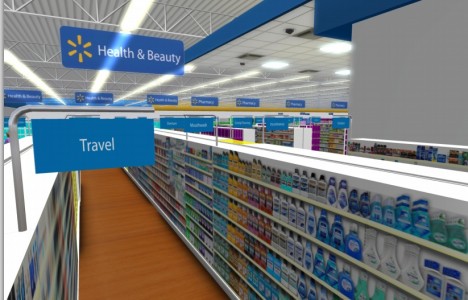I’m a big believer in OpenSim. One reason is that I get to hear about large projects and deployments that use OpenSim that I’m not allowed to talk about. There are organizations out there paying sizeable sums for OpenSim builds and custom development work.

Meanwhile, I also talk to vendors of competing, proprietary technologies who tell me that they never have to compete against OpenSim projects — because the vendors who are capable of doing them don’t respond to the requests for proposals, and don’t show up at customer sites.
To me, this indicates a significant sales and marketing gap in OpenSim. The platform is already good enough for many enterprises, and compares favorably on a feature-by-feature basis with other proprietary platforms I’ve tried. And some vendors are, in fact, able to successfully sell it.
So I’m always looking for ways to help OpenSim vendors improve their sales and marketing.
Lately, I’ve been reading a lot about conversion. This is where Website visitors turn into paying customers. Here are some issues that I see come up in OpenSim.
1. Nobody wants it
I hear this complaint from vendors all the time. Nobody wants OpenSim. Social users don’t want to move from Second Life to OpenSim. Business users don’t want to invest in OpenSim.
It is a fact that it is extremely difficult to sell a product that people just don’t want.
But let me ask you a couple of questions:
- Do you know of some people or companies who do want your product or service?
- Do you know of competitors selling a similar product or service?
If at least some people want your product, then there are enough customers out there for the typical small company to be successful.
2. You didn’t ask enough people
You might have heard that click-through rates for ads are low, with one click for every thousand impressions a typical result.
Then, once someone has clicked and come to your site, the average sales rate is in the low single digits.
Let’s look at a typical scenario — a 0.1 percent click rate, and a 3 percent sales rate. That means that in order to make one sale, you will have to get your offer in front of 33,000 people. That’s for the average products and services out there. If you have to add in the need to educate your customers about your product, the rate will drop.
3. You didn’t ask at all
This actually happens. I’ve been on websites that try to sell stuff, but have no “buy” button. In fact, I was recently guilty of just that. My advertising page — the whole goal of which was, supposedly, to sell advertising — had no way to actually buy advertising on it. The best people could do was email me directly and ask to buy an ad.
And some people did, in fact, do that. So I’m extra grateful to them — first, for supporting this site. Second, for successfully navigating my ad sales page.
Ideally, your “buy now” button should be clearly visible — the focal point of the site, even — and appear above the fold, so people don’t have to scroll down to find it.
4. You confused people
This was the other mistake I made on my advertising sales page. There were so many options, and different ads sizes, and different pages they could run on, and different frequency rates.
I simplified it to just three choices, and we’ll see how it works.
Elsewhere in OpenSim, I’ve seen sites that make customers make similarly complex decisions, and worse. Each time a customer is faced with a question they don’t know the answer to is an opportunity for the customer to give up and go away.
Similarly, we all know that selling OpenSim is an educational process. But most sites out there assume that the visitor already knows everything there is to know about OpenSim. There’s very little educating going on.
Which applies to Hypergrid Business as well. I know I need to do a better job getting basic articles in a place where they’re easy to find. Articles that introduce people to OpenSim, to grids, and to hosting.
5. You didn’t gain their trust
Have you convinced visitors that they can trust you with their money?
You can build trust by being around for a while, by providing help to the community, by sponsoring good causes. And you can reinforce that on your website by having a Q&A section where people can ask real question and get real answers — answers that don’t try to hide problems but do fix them. So, for example, if someone has a problem with your backups and you fix it, you might be tempted to remove that discussion from your forums or other public-facing areas. After all, you’ve fixed the problem. However, customers know that problems happen. What they want to know is how good you are at fixing them. Are you courteous, and helpful, and efficient?
It’s the same way that the presence of negative reviews on Amazon actually increases sales. Customers want to know both the good and the bad about a product, and trust reviews more if there are negative ones.
Another way to increase trust is to have testimonials from customers on your site, links to articles about your company, logos of your partners, and other types of social proof.
- International singers gather on Alternate Metaverse Grid for first annual International Day - April 15, 2024
- OpenSim hits new land, user highs - April 15, 2024
- Wolf Territories rolls out speech-to-text to help the hearing impaired - April 15, 2024
